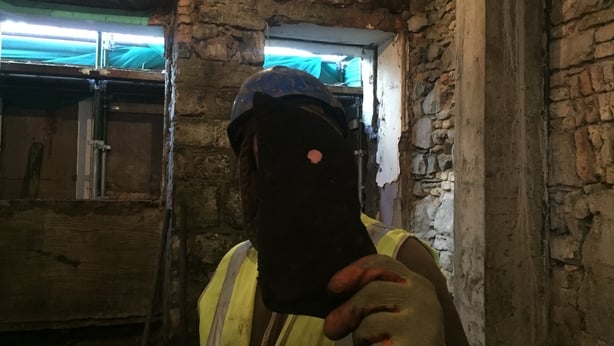Archaeologists have discovered what is believed to be part of the oldest-known stone building in Galway city, dating from the early 13th Century.
The find came as part of a survey during construction work at a site on Quay Street.
It is believed that the two metre thick stone walls formed part of Dún na Gaillimhe, a castle built by the De Burgo family in 1232.
Portal to the past: Archaeologists believe they have found ruins of a castle in Galway city pic.twitter.com/W9BBV3LJuv
— RTÉ News (@rtenews) January 15, 2018
The fortification was built along what was then the shoreline of the river Corrib. It was preceded by a wooden stronghold on the same site, which is mentioned in the annals of 1124.
It is thought that the building was the starting point for the development of what became Galway city in the centuries that followed.
The recently published Historic Towns Atlas of Galway states that the structure had a "major bearing" on the development of the settlement.
It would have provided for easy access to the river as well as serving as a strategic defence and a residence for the De Burgos.
Records show that Richard de Burgo's son Walter died in the building in 1271 but the last record of the castle was in 1280.
Historians believe that it was demolished around that time and that materials from the building were used in the construction of the Hall of the Red Earl, a short distance away.

Until now, that was the oldest discovered structure in the city.
Despite the fact that the castle stood for just under 50 years, archaeologists working at the site say they have found a range of material that will help their research.
There is extensive evidence of burning at the site, with charcoal like deposits extending over a considerable area.
In addition, animal bones, sharpening tools and roof tiles have also been uncovered. These will all be subject to carbon dating tests.
Lead archaeologist at the site Frank Coyne said the discovery is of considerable significance as it provides the first trace of the earliest-known stone fortification built by the Anglo-Normans in Galway.
Two adjoining sections of the wall have been uncovered, a little under half a metre below ground level.
VIDEO: Archaeologists find what they believe to be walls from Galway’s oldest known stone building. Built in 1232. No trace of it after 1280’s.... until now. More on @rtenews pic.twitter.com/PBK6fjQVRK
— Pat McGrath (@patmcgrath) January 15, 2018
Galway City Heritage Officer Jim Higgins said the construction was typical of the time and has described the find as fantastic news for the city.
Archaeological surveys will continue at the site for a number of weeks. Work on other aspects of the development is continuing.
A retail outlet is due to open in the building later this year but it is thought the ancient ruins will be highlighted as part of the refurbished structure.

